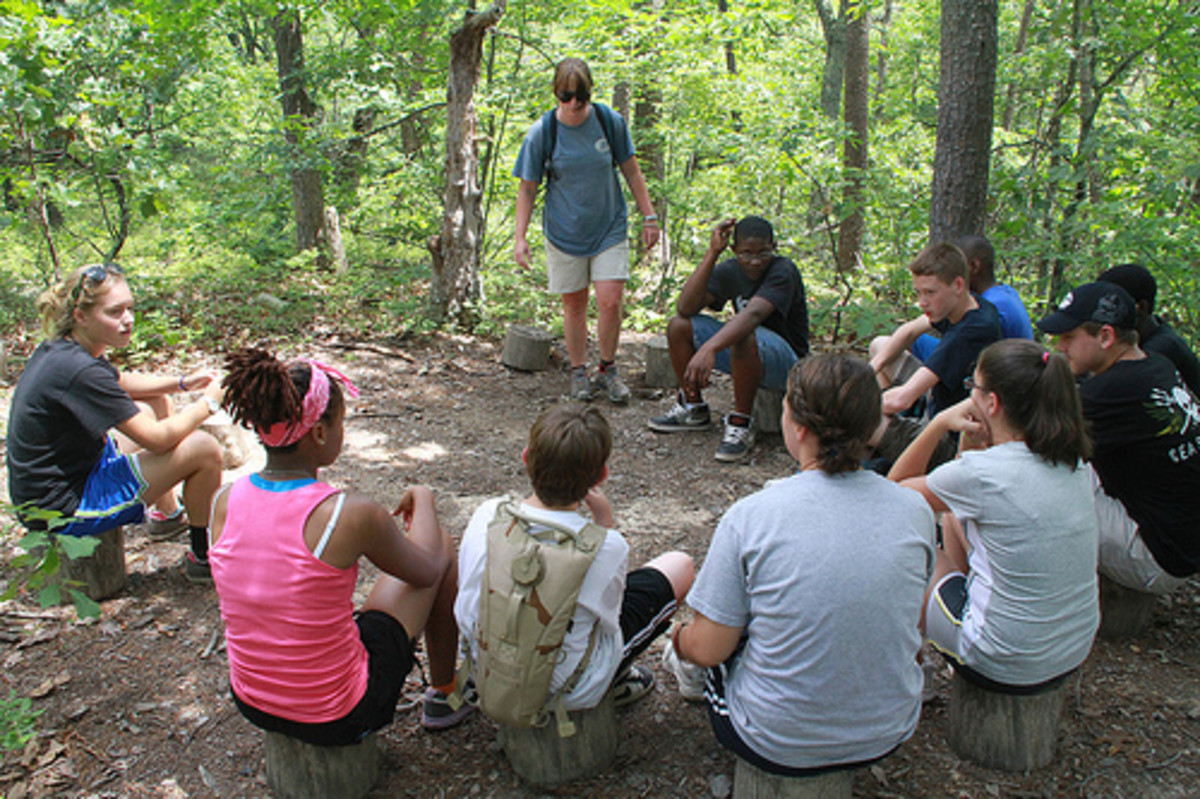Educate The People!

The Position
If you were to ask a random person walking on the street what they thought was the most important thing that we can do for the youth, that person would reply, “Educate them.” This answer is derived from basic common sense. What better way to create a productive, promising society than to enrich the
minds of those that will in the future comprise the makeup of our society? Yet in the United States, our position as a world leader means nothing towards the state of the young people’s minds. We statistically score much lower than most other developed nations. Decreasing funding allocated to science and inefficient allocations in education makes the country stagnant because scientific programs struggle to finance their experiments, technological advances that may have been made cannot due to the exorbitant expense of experimentation, the children who are the future of the world will be less intelligent than their predecessors due to inferior schooling, and we would suffer from the roadblocks that could have been
prevented with sufficient scientific testing.
The ever-diminishing funds allocated to science departments really take a toll on the scientific community. In a survey of more than 3,700 US scientists released on 29 August by the American Society for Biochemistry and Molecular Biology in
Rockville, Maryland, one-third said that they had laid off researchers, and close to
two-thirds had seen their funding fall since 2010 (Morello 2013). This number is
appalling. Even more appalling is the fact that federal spending on research and
development has declined by 16.3% since 2010, the fastest drop in a three-year
period since the end of the space race in the 1970s, according to an analysis
published on 3 September by the American Association for the Advancement of
Science in Washington DC. This emerging trend is not about to change, because Congress, which returned to Washington DC this week, has made little progress on setting government spending for the 2014 fiscal year, which begins on October 1st (Morello 2013). Congressional disputes have become somewhat of a national past time like football and baseball, ESPECIALLY over budget. But exactly what kind of budget will be proposed? Barry Toiv, vice-president for public affairs at the Association of American Universities in Washington DC, worries that House Republicans will now end up seeking cuts beyond 2%. “There is continuing pressure for additional budget cuts as a price for raising the debt ceiling,” he says (Morello 2013). Furthermore, not only have budget losses on general institutions taken their toll, even national institutions have suffered from budget cuts. According to the University of Maryland, in 2012 the NIH received 7% less grants and its funds from the defense budget dropped 3% (Morello 2013). What does this mean for the future of the field which is so vital for the future of our nation? Well nearly half of the recipients who get federal science funding say they've recently laid off or will lay off scientists and researchers, because federal grants are tougher to win, according to a survey by the American Society for Biochemistry and Molecular Biology and 15 other scientific societies (Morello 2013). This proves not only to inhibit the ability of science institutions to conduct its business; it threatens the job security of those in the field which negatively affects the number of people who want to be in the science field. I mean who would pursue a degree in something you can’t get a job in? Furthermore, wage cuts will inevitably take place in a work environment where financial problems have arisen. To cut costs an employer must either conduct its business differently (do less science) or cut the cost of employment, either by reducing the number of employees or paying them less. So building on the prior point, who would want to pursue a degree in something you can’t get a job in, and when you miraculously do, you have poor job security and a lower income. The worst part is that these conditions don’t look like they’re changing, so this trend will very negatively impact science.
The funding allocated to education is either not enough or improperly allocated
because we as a nation lag far behind other nation’s students in education. In 2013,the United States ranked 17th out of 34 different countries and did poorly on the math portion of a test taken by developed nations (Ryan 2013). The U.S. scored below the PISA math mean and ranks 26th out of the 34 countries. To give you a perspective on just how bad our math scores are, One in four U.S. students did not reach the PISA baseline level 2 of mathematics proficiency. At this level, “students begin to demonstrate the skills that will enable them to participate effectively and
productively in life,” according to the PISA report (ryan 2013). According to
this test, one in four American students cannot use math to a level that allows them
to live productively. That is a sad testament to our failing education system. Although Massachusetts is one of the higher scoring states in the US, their students still failed in comparison to Shanghai students, averaging two years of schooling behind them (ryan 2013). Our reading scores are dismal as well. A report by the Annie E. Casey Foundation noted that one out of three students is a ‘below basic’ reader (ryan 2013). There is reason to believe the funds are not being allocated properly, the evidence being that the Slovak Republic, which scores similarly to the U.S., spends $53,000 per student. The U.S. spends $115,000 (Ryan 2013). The point is, in the growing global marketplace, students will need to excel in both math and science to compete internationally as engineers, scientists, physicians, and creative entrepreneurs. Yet, in an assessment by the Organization for Economic Cooperation and Development, 15-year-olds in the U.S. placed 25th out of 30 countries in math performance and 21st in science performance. In April 2009, Education Week reported that average math and reading scores for 17-year-
olds in the National Assessment of Educational Progress (NAEP) tests have
remained stagnant since the 1970s. And according to The Journal, fourth- and
eighth-grade reading scores "have barely budged since 1992," despite policy and
investment focused on improving overall student achievement (Ryan 2013).
Obviously, current policies do not encourage the type of mental stimulation and growth that we as a developed nation should come to expect as a standard.
The reduction of science funding will result in less innovation and the
prolonging of suffering from roadblocks that could otherwise be solved through
researching solutions to those problems. Obviously, if less funding is allocated to
Alzheimer’s research programs then any possible cure for that ailment is going to
take longer to find because of the reduced number of experiments/research taking
place. Problems that are a result of climate change can be somewhat predicted by
scientists and research is vital to these scientists because it affects their ability to
predict. Effective action to remedy these solutions relies on our scientist’s abilities to predict WHAT the problems will be. Problems from environmental factors are handled through the same mechanism. On top of that, scientists can research solutions to reduce the amount of climate change through reduction of factors that induce climate change. Scientists can reduce environmental problems by reducing the amount of factors that create environmental problems. An ounce of prevention is better than a pound of cure is the point here. It is important that science gets the funding it deserves so that these solutions can be found, problems avoided, and ultimately, lives saved.
The funding allocated to science and the quality of education in this nation is
unsavory. Decreasing the funding to these beneficial institutions only exacerbate
the problems, whereas increasing funding or dividing the allocations more wisely
would decrease them in the same manner. As a developed nation and supposed ‘world leader’ we could do much better, and any impediment whatsoever to these institutions take the nation backwards. To be competitive in a global marketplace we must continue to innovate and our ability to innovate rests in the ability of our scientists.
WORKS CITED
Morello, Lauren. "More Cuts for U.S. Science." (2013): Web. 11 Sept. 2013.
Ryan, Julia. "American Schools vs. The World ." (2013): Web. 3 Dec. 2013.








